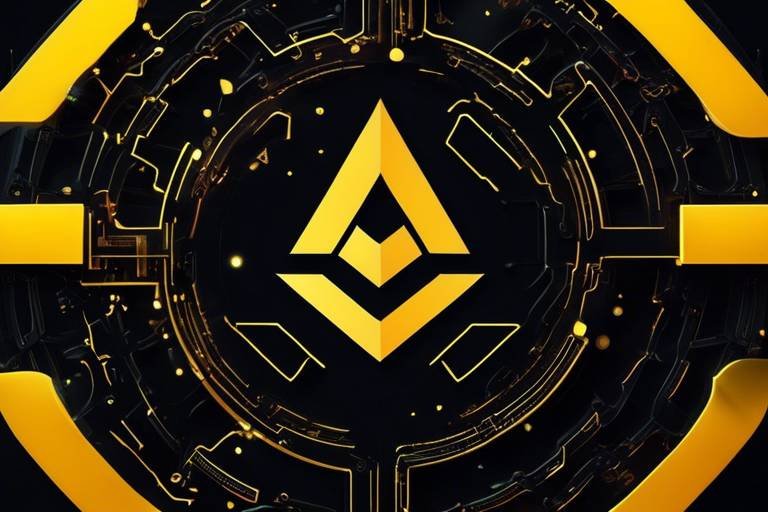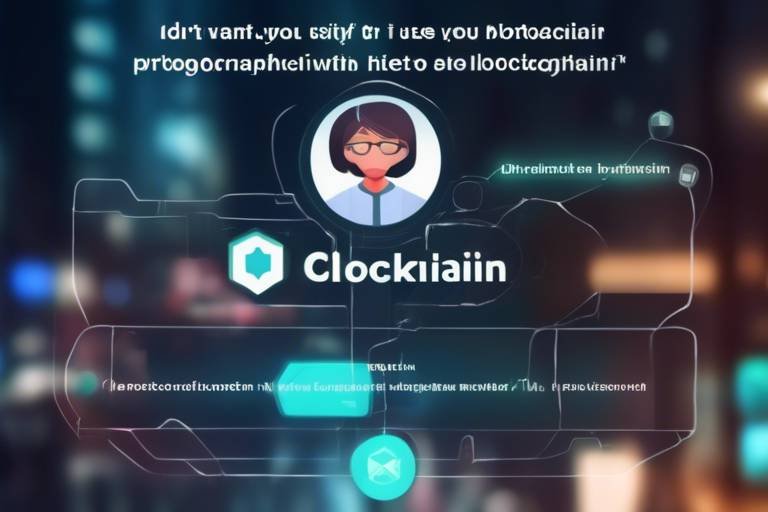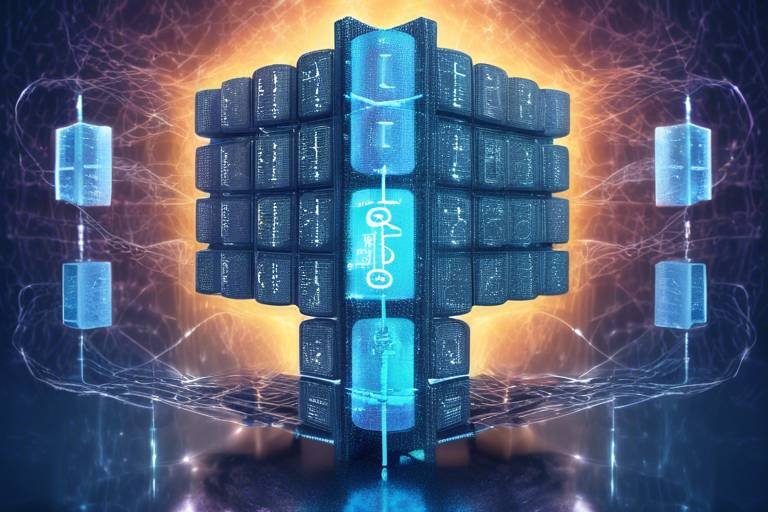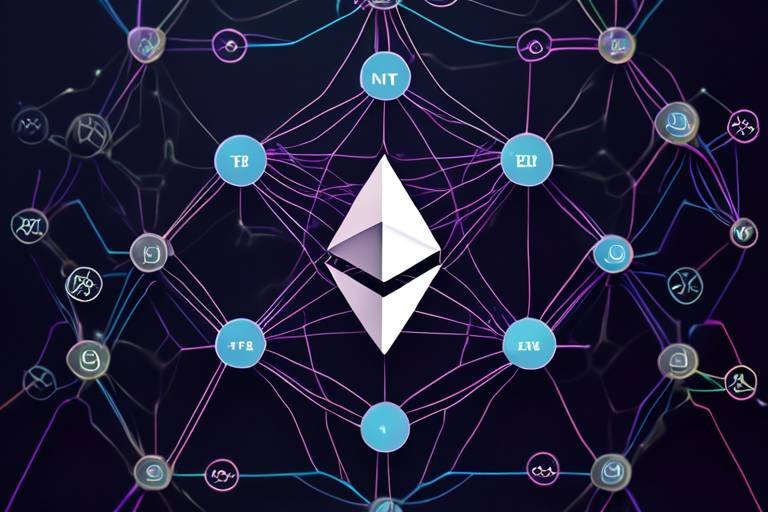Binance Smart Chain - A Comprehensive Review
In the ever-evolving world of blockchain technology, Binance Smart Chain (BSC) has emerged as a formidable player, redefining the landscape of decentralized applications and finance. Launched in September 2020, BSC was designed to complement the Binance Chain, offering a robust environment for developers and users alike. But what sets it apart from other blockchain platforms, particularly Ethereum? This article delves deep into the features, advantages, challenges, and overall impact of Binance Smart Chain on the crypto ecosystem, providing you with a comprehensive understanding of its significance in today's digital economy.
At its core, Binance Smart Chain was created to provide a high-performance blockchain that supports smart contracts and decentralized applications (dApps). Unlike its predecessor, Binance Chain, which primarily focused on trading and asset transfers, BSC enables a broader range of functionalities. Its unique dual-chain architecture allows users to seamlessly transfer assets between Binance Chain and Binance Smart Chain, enhancing the overall user experience. This innovative approach not only improves the scalability of the platform but also fosters a vibrant ecosystem of dApps that cater to various needs, from finance to gaming.
One of the standout features of Binance Smart Chain is its dual-chain architecture. This system allows for the efficient operation of both Binance Chain and Binance Smart Chain, enabling users to transfer assets and data between the two with ease. Additionally, BSC's compatibility with Ethereum means that developers can easily migrate their projects, which significantly expands the range of dApps available on the platform. Coupled with impressive transaction speeds and low fees, it's no wonder that Binance Smart Chain is gaining traction among developers and users alike.
The dual-chain architecture is a game-changer for Binance Smart Chain. By having two interconnected chains, BSC can facilitate a myriad of functionalities. For instance, users can transfer tokens effortlessly between Binance Chain and Binance Smart Chain, allowing for enhanced liquidity and a more dynamic ecosystem. This architecture not only supports decentralized finance (DeFi) applications but also opens the door to a plethora of financial services and dApps, making it an attractive option for developers looking to innovate.
The benefits of this dual-chain system are manifold:
- Improved Scalability: With two chains operating in tandem, BSC can handle a higher volume of transactions without the congestion often seen in other blockchains.
- Reduced Congestion: By allowing transactions to be processed on either chain, users experience faster transaction times and lower fees.
- Leveraging Binance's Ecosystem: BSC users can tap into Binance's extensive ecosystem, including its vast user base and various services.
Another critical aspect of Binance Smart Chain is its interoperability with Ethereum. This compatibility allows developers to migrate their Ethereum-based projects to BSC with minimal friction. As a result, the platform has seen a surge in dApps, from DeFi protocols to NFT marketplaces. This seamless transition not only enhances the diversity of applications available on BSC but also fosters a spirit of innovation within the blockchain community.
When it comes to transaction speed and cost, Binance Smart Chain shines brightly. Users can expect transaction confirmations in seconds, which is a significant improvement over many other blockchain networks. Furthermore, the transaction fees on BSC are considerably lower than those on Ethereum, making it an attractive option for both individual users and developers. This combination of speed and cost-effectiveness positions Binance Smart Chain as a leading choice for anyone looking to engage with blockchain technology.
Binance Smart Chain has become a hub for various applications, showcasing its versatility and potential. From decentralized finance (DeFi) platforms to non-fungible tokens (NFTs), BSC is home to a myriad of projects that leverage its unique features. This section will explore some of the most prominent use cases that highlight the capabilities of Binance Smart Chain.
The rise of DeFi on Binance Smart Chain has been nothing short of explosive. With platforms offering lending, borrowing, and yield farming, users are flocking to BSC to take advantage of the opportunities available. The low transaction fees and high speeds have contributed to the rapid adoption of these DeFi projects, allowing users to engage in financial activities without the barriers often encountered on more congested networks.
The NFT ecosystem on Binance Smart Chain is also burgeoning. With various marketplaces emerging, artists and creators are utilizing BSC's capabilities to mint and trade digital art, collectibles, and in-game assets. The low fees and fast transactions make it an appealing option for those looking to enter the NFT space, further solidifying BSC's position as a versatile platform.
Despite its many advantages, Binance Smart Chain is not without its challenges. Issues such as centralization, security risks, and competition from other blockchain networks pose significant hurdles that could impact its long-term growth. Understanding these challenges is crucial for anyone looking to engage with BSC.
One of the primary criticisms of Binance Smart Chain revolves around its centralization. The validator structure and governance model have raised eyebrows, leading to concerns about user trust and network security. The reliance on a limited number of validators can create vulnerabilities that might be exploited, making it essential for the BSC team to address these issues to maintain user confidence.
Security is another area of concern for Binance Smart Chain. With the rise of DeFi and NFTs, the platform has become a target for malicious actors. Smart contract exploits and network attacks are significant risks that could undermine the integrity of the ecosystem. The BSC team has implemented various measures to mitigate these threats, but ongoing vigilance is necessary to ensure the safety of users and their assets.
Looking ahead, the future of Binance Smart Chain appears promising. With ongoing innovations, partnerships, and a commitment to enhancing the platform, BSC is poised for continued growth. As the blockchain industry evolves, BSC's adaptability and user-centric approach will be vital in maintaining its competitive edge.
Anticipated features and upgrades for Binance Smart Chain include scalability improvements and enhanced interoperability with other chains. These developments aim to solidify BSC's position in the competitive blockchain market, ensuring that it remains a top choice for developers and users alike.
The success of Binance Smart Chain has broader implications for the entire blockchain ecosystem. Its influence on DeFi, NFT markets, and overall blockchain adoption is significant. As BSC continues to grow, it will likely inspire other projects to innovate and improve, ultimately benefiting the entire industry.
Q1: What is Binance Smart Chain?
A1: Binance Smart Chain is a blockchain platform that supports smart contracts and decentralized applications, designed to work alongside Binance Chain.
Q2: How does Binance Smart Chain differ from Ethereum?
A2: While both platforms support smart contracts, Binance Smart Chain offers faster transaction speeds and lower fees, making it more accessible for users.
Q3: What are the main use cases for Binance Smart Chain?
A3: BSC is primarily used for decentralized finance (DeFi) applications and non-fungible tokens (NFTs), among other dApps.
Q4: What challenges does Binance Smart Chain face?
A4: BSC faces challenges such as centralization concerns, security risks, and competition from other blockchain networks.
Q5: What is the future outlook for Binance Smart Chain?
A5: The future looks promising, with ongoing developments and upgrades aimed at enhancing scalability and interoperability.

Introduction to Binance Smart Chain
Welcome to the world of Binance Smart Chain (BSC), a revolutionary blockchain platform that has quickly made a name for itself in the ever-evolving crypto landscape. Launched in September 2020 by the Binance team, BSC was created to address some of the limitations faced by existing blockchain networks, particularly Ethereum. But what makes BSC stand out in a crowded market? Well, let’s dive into its unique features and technological advancements that set it apart.
At its core, Binance Smart Chain is designed to provide a robust infrastructure for decentralized applications (dApps) and smart contracts. Unlike Ethereum, which has faced criticism for high transaction fees and slower speeds, BSC offers a more efficient alternative. With its unique dual-chain architecture, BSC allows users to transfer assets seamlessly between Binance Chain and Binance Smart Chain, enhancing the overall user experience.
One of the key differentiators for Binance Smart Chain is its compatibility with Ethereum. This means that developers can easily migrate their existing Ethereum projects to BSC without having to start from scratch. Imagine being able to leverage the vast Ethereum ecosystem while enjoying lower fees and faster transaction times—this is precisely what BSC offers. It’s like having the best of both worlds!
Moreover, the launch of Binance Smart Chain has been a game-changer for the decentralized finance (DeFi) space. With its high throughput and low latency, BSC has become a hotspot for various DeFi projects, allowing users to engage in activities like yield farming, lending, and trading with minimal costs. In this way, BSC is not just another blockchain; it’s a vibrant ecosystem that fosters innovation and growth.
As we explore the features and use cases of Binance Smart Chain in this article, it’s essential to recognize its significance in the broader blockchain ecosystem. BSC is not just a competitor to Ethereum; it’s a platform that opens new doors for developers and users alike, making blockchain technology more accessible and efficient.
In summary, Binance Smart Chain is a powerful player in the blockchain arena, offering unique features that cater to the needs of developers and users. Its dual-chain architecture, Ethereum compatibility, and focus on DeFi applications make it a platform worth watching. So, are you ready to dive deeper into what Binance Smart Chain has to offer? Let’s go!

Key Features of Binance Smart Chain
Binance Smart Chain (BSC) has rapidly gained traction in the blockchain landscape, primarily due to its unique features that cater to both developers and users alike. One of the standout characteristics of BSC is its dual-chain architecture, which allows for a seamless interaction between Binance Smart Chain and Binance Chain. This innovative design enables users to transfer assets effortlessly while taking advantage of the robust functionalities offered by decentralized applications (dApps) and financial services. Unlike many other blockchain platforms, BSC was specifically crafted to address the limitations of existing networks, such as scalability and transaction speed.
Another remarkable feature of Binance Smart Chain is its compatibility with Ethereum. This interoperability means that developers can easily migrate their projects from Ethereum to BSC without having to start from scratch. Consequently, this has led to a surge in the number of dApps available on the platform, fostering an environment ripe for innovation. Developers are not only able to leverage BSC's lower fees and faster transaction speeds but also tap into the existing Ethereum ecosystem, making it a win-win situation for everyone involved.
When it comes to transaction speed and cost, Binance Smart Chain truly shines. The platform boasts an impressive ability to process transactions in mere seconds, which is a significant improvement over many competitors. This efficiency is complemented by low transaction fees, making BSC an attractive option for users who are tired of high gas fees associated with other blockchain networks. In fact, the average transaction fee on BSC is often just a fraction of a cent, allowing users to engage in microtransactions without worrying about excessive costs.
To summarize the key features that make Binance Smart Chain stand out, consider the following table:
| Feature | Description |
|---|---|
| Dual-Chain Architecture | Facilitates seamless asset transfers and enhances dApp functionality. |
| Ethereum Compatibility | Enables easy migration of projects from Ethereum to BSC. |
| High Transaction Speed | Processes transactions in seconds, significantly faster than many competitors. |
| Low Transaction Fees | Offers minimal fees, making it economical for users. |
In conclusion, the combination of these features not only positions Binance Smart Chain as a formidable player in the blockchain ecosystem but also attracts a diverse range of developers and users. By addressing common pain points associated with other networks, BSC has carved out a niche that emphasizes speed, efficiency, and user satisfaction. As the platform continues to evolve, its unique features will likely play a crucial role in shaping the future of blockchain technology.
- What is Binance Smart Chain?
BSC is a blockchain platform designed for running smart contracts and dApps, offering high speed and low fees. - How does BSC differ from Ethereum?
While both support smart contracts, BSC offers faster transaction speeds and lower fees than Ethereum. - Can I migrate my Ethereum project to BSC?
Yes, BSC is compatible with Ethereum, allowing for easy migration of projects. - What types of applications are built on BSC?
BSC hosts a variety of applications, including DeFi platforms, NFT marketplaces, and more. - Are there any risks associated with using BSC?
Like any blockchain, BSC has its risks, including centralization concerns and potential security vulnerabilities.

Dual-Chain Architecture
The of Binance Smart Chain (BSC) is a fascinating innovation that sets it apart from many other blockchain platforms. At its core, this architecture consists of two interconnected chains: the Binance Chain and the Binance Smart Chain. While the Binance Chain focuses primarily on facilitating fast and efficient transactions, the Binance Smart Chain is designed to support smart contracts and decentralized applications (dApps). This unique setup allows users to seamlessly transfer assets between the two chains, creating a more versatile ecosystem for developers and users alike.
What makes this dual-chain system so appealing? Well, it brings a variety of advantages that enhance the overall user experience. For starters, the interoperability between the two chains means that users can quickly and easily move their assets without the usual bottlenecks associated with other blockchain networks. Imagine needing to send funds from one platform to another only to find yourself stuck in a slow transaction queue. With Binance's architecture, that frustration is significantly reduced.
Moreover, the dual-chain model offers improved scalability. As the demand for decentralized applications grows, having two chains allows Binance to handle a larger volume of transactions without compromising speed or efficiency. This is particularly important in the rapidly evolving world of cryptocurrencies, where user demand can spike unexpectedly. The ability to scale effectively ensures that Binance Smart Chain remains a viable option for developers looking to launch their projects.
Additionally, the dual-chain architecture enhances the functionality of decentralized applications. Developers can leverage the strengths of both chains, utilizing the fast transaction capabilities of Binance Chain while also taking advantage of the smart contract features offered by Binance Smart Chain. This flexibility encourages innovation and creativity, as developers are not limited to a single framework or set of tools. They can build more complex and engaging applications that cater to a wider audience.
To further illustrate the benefits of this architecture, consider the following table, which highlights key differences between Binance Chain and Binance Smart Chain:
| Feature | Binance Chain | Binance Smart Chain |
|---|---|---|
| Primary Function | Fast transactions and asset transfers | Smart contracts and dApps |
| Transaction Speed | High | High |
| Consensus Mechanism | Proof of Stake Authority (PoSA) | Proof of Staked Authority (PoSA) |
| Interoperability | Limited | High with Binance Chain |
In conclusion, the dual-chain architecture of Binance Smart Chain is a game changer in the blockchain ecosystem. It not only enhances transaction efficiency but also fosters an environment ripe for innovation. By allowing developers and users to interact with both chains seamlessly, Binance has created a robust platform that meets the demands of a rapidly changing digital landscape. As we continue to see advancements in this area, it will be exciting to witness how this architecture evolves and shapes the future of decentralized technologies.
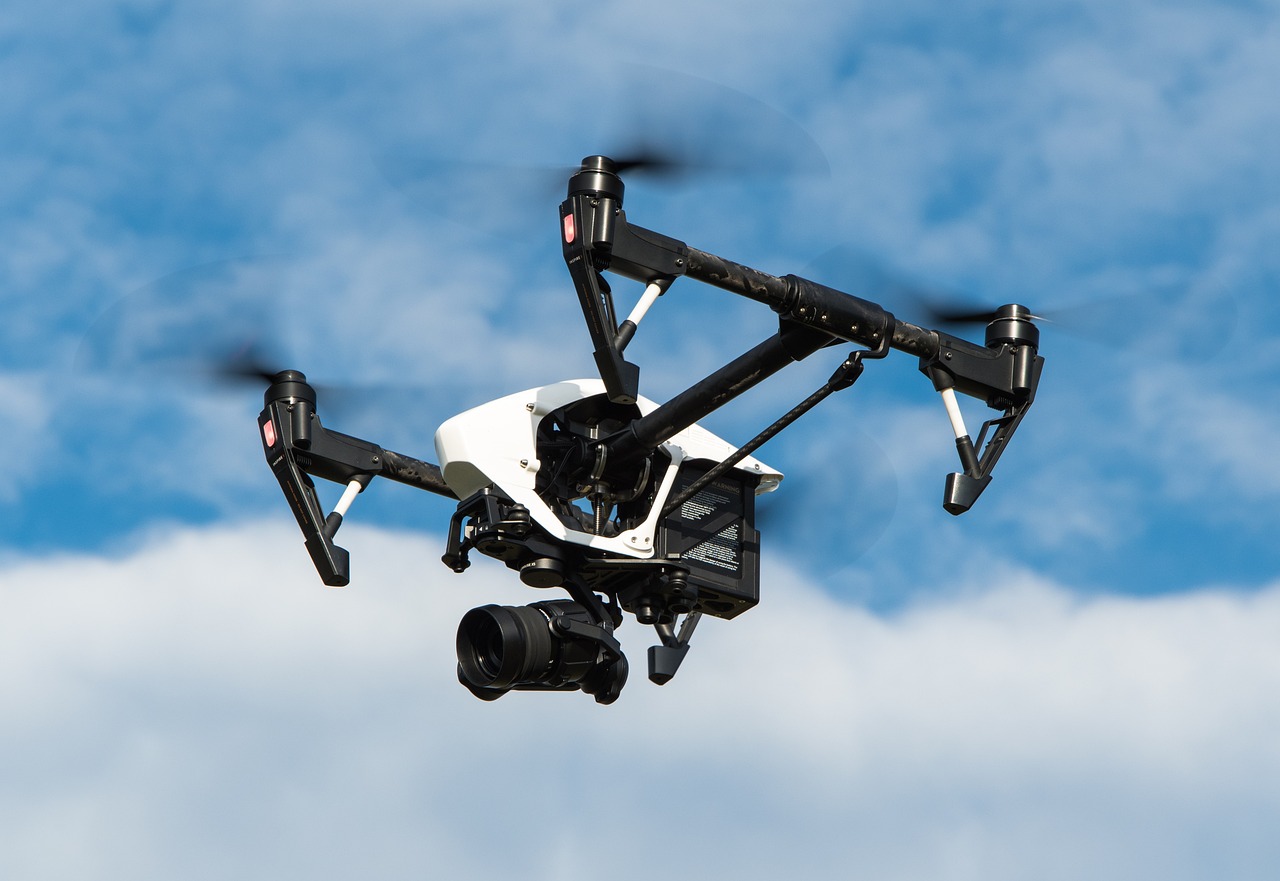
Advantages of Dual-Chain
The dual-chain architecture of Binance Smart Chain (BSC) offers a plethora of advantages that significantly enhance its functionality and user experience. At the core of this innovative design is the seamless interaction between Binance Chain and Binance Smart Chain, which allows for the efficient transfer of assets and data. This interconnectedness is akin to having two highways running parallel to each other; while one is designed for speed and efficiency, the other can handle heavy traffic without any bottlenecks. This synergy not only improves the overall performance of the network but also fosters a robust ecosystem for developers and users alike.
One of the most notable benefits of the dual-chain architecture is improved scalability. By distributing workloads across two chains, Binance Smart Chain can handle a significantly higher volume of transactions compared to single-chain systems. This is especially crucial during periods of high demand, where congestion can lead to delays and increased transaction costs. With the ability to offload transactions onto Binance Chain, BSC effectively mitigates these issues, ensuring that users experience faster transaction times and lower fees.
Furthermore, the dual-chain setup enhances the user experience by providing access to a broader range of applications and services. Developers can leverage the capabilities of both chains to create decentralized applications (dApps) that are not only efficient but also feature-rich. For instance, a dApp can utilize Binance Chain for quick asset transfers while relying on Binance Smart Chain for complex smart contract functionalities. This flexibility empowers developers to innovate without being hindered by the limitations of a single blockchain.
Another advantage of this architecture is the reduced congestion on the network. In traditional blockchain systems, high transaction volumes can lead to slow processing times and inflated fees. However, the dual-chain model allows BSC to balance the load effectively. Users can conduct transactions on Binance Chain for speed, while more intricate operations can be handled on Binance Smart Chain without overwhelming either chain. This dynamic creates a more stable and reliable environment for all participants in the network.
In addition to these operational benefits, the dual-chain architecture also opens up opportunities for enhanced collaboration within the Binance ecosystem. With access to Binance’s extensive suite of services, such as the Binance Exchange and various DeFi platforms, users and developers can tap into a wealth of resources and tools. This interconnected ecosystem not only boosts the visibility of projects but also facilitates partnerships and integrations that can lead to innovative solutions in the blockchain space.
In conclusion, the advantages of Binance Smart Chain's dual-chain architecture are manifold. From improved scalability and reduced congestion to enhanced user experiences and collaboration opportunities, this innovative design positions BSC as a formidable player in the blockchain landscape. As more developers recognize the potential of this architecture, the possibilities for growth and innovation within the Binance ecosystem are virtually limitless.
- What is Binance Smart Chain?
Binance Smart Chain is a blockchain platform designed for running smart contracts and decentralized applications (dApps), known for its high transaction speeds and low fees.
- How does the dual-chain architecture work?
The dual-chain architecture allows Binance Smart Chain and Binance Chain to operate simultaneously, enabling efficient asset transfers and improved scalability.
- What are the benefits of using Binance Smart Chain?
Benefits include low transaction fees, high speeds, and compatibility with Ethereum, making it easier for developers to migrate projects.
- Are there any risks associated with Binance Smart Chain?
Yes, risks include centralization concerns and potential security vulnerabilities, which users should consider before engaging with the platform.

Interoperability with Ethereum
One of the standout features of Binance Smart Chain (BSC) is its remarkable . This compatibility is not just a technical detail; it represents a significant shift in how developers and users can interact with blockchain technology. Imagine being able to seamlessly transfer your assets and applications from one platform to another without the usual headaches of compatibility issues. That’s precisely what BSC offers, and it opens up a world of possibilities for innovation and growth.
At its core, interoperability allows developers to migrate their projects from Ethereum to Binance Smart Chain with relative ease. This means that if you've built a decentralized application (dApp) on Ethereum, you can bring it over to BSC, tapping into its faster transaction speeds and lower fees, which are often a pain point on Ethereum due to network congestion. In fact, many developers are finding that the transition is not only straightforward but also beneficial in terms of performance and user experience.
Additionally, the use of the Ethereum Virtual Machine (EVM) on Binance Smart Chain means that developers can write their smart contracts in the same programming language they're used to, primarily Solidity. This eliminates the learning curve typically associated with switching to a new platform. As a result, we are witnessing an explosion of dApps on BSC that were initially developed for Ethereum. This cross-pollination of ideas and technologies fosters a vibrant ecosystem where innovation can thrive.
Furthermore, BSC’s interoperability extends beyond just dApps. It enables users to leverage the strengths of both ecosystems. For example, users can utilize Ethereum-based tokens on Binance Smart Chain and vice versa, creating a rich tapestry of assets that enhances liquidity and trading opportunities across platforms. This is particularly important in the world of decentralized finance (DeFi), where liquidity is king. The ability to move assets freely between Ethereum and BSC can lead to better prices and more efficient markets.
However, while the benefits of interoperability are clear, it’s essential to consider the challenges it brings as well. Users must remain vigilant about security risks, especially when bridging assets between chains. The potential for exploits and vulnerabilities can increase with the complexity of cross-chain interactions. Therefore, both developers and users need to ensure that they are utilizing reputable bridges and platforms to minimize risks.
In summary, the interoperability between Binance Smart Chain and Ethereum is a game-changer. It not only simplifies the migration process for developers but also enhances the overall user experience by providing access to a broader range of assets and applications. As the blockchain landscape continues to evolve, this interoperability will likely play a crucial role in shaping the future of decentralized technologies.
- What is Binance Smart Chain?
Binance Smart Chain is a blockchain network that runs in parallel with Binance Chain, enabling smart contracts and decentralized applications (dApps) while maintaining high transaction speeds and low fees.
- How does Binance Smart Chain achieve interoperability with Ethereum?
BSC achieves interoperability through its use of the Ethereum Virtual Machine (EVM), allowing developers to easily migrate their Ethereum-based projects and utilize Ethereum assets on the BSC network.
- What are the benefits of using Binance Smart Chain over Ethereum?
The primary benefits include faster transaction speeds, lower fees, and the ability to leverage a growing ecosystem of dApps and financial services.
- Are there security risks associated with using Binance Smart Chain?
Yes, as with any blockchain, there are potential security risks, particularly when transferring assets between chains. Users should ensure they use secure bridges and reputable platforms.

Transaction Speed and Cost
When it comes to blockchain technology, transaction speed and cost are two critical factors that can make or break a platform's appeal. Binance Smart Chain (BSC) has positioned itself as a frontrunner in this domain, offering lightning-fast transaction speeds and remarkably low fees that are enticing both developers and users alike. Imagine sending a transaction across the blockchain and having it confirmed in mere seconds—this is the reality with BSC, where the average block time is just about 3 seconds. In contrast, Ethereum's average block time hovers around 13-15 seconds, making BSC a more attractive option for those who value speed.
But what does this mean for users? Lower transaction times translate to a more seamless experience, especially in high-frequency trading or decentralized applications (dApps) where speed is of the essence. Additionally, the cost per transaction on Binance Smart Chain is significantly lower than that of many other blockchain platforms. On BSC, users typically pay a fee of just a few cents, while on Ethereum, fees can soar to several dollars, particularly during times of network congestion. This stark contrast not only enhances user experience but also encourages more transactions, fostering a vibrant ecosystem.
To put this into perspective, let’s take a look at a comparative analysis of transaction speeds and costs across popular blockchain platforms:
| Blockchain | Average Transaction Speed | Average Transaction Cost |
|---|---|---|
| Binance Smart Chain | 3 seconds | $0.10 |
| Ethereum | 13-15 seconds | $5.00 (varies) |
| Bitcoin | 10 minutes | $1.00 (varies) |
This table illustrates the competitive edge that Binance Smart Chain holds in terms of efficiency and cost-effectiveness. For developers, this means that building dApps on BSC can lead to lower operational costs, which is a significant advantage in the ever-evolving landscape of blockchain technology. Users are more likely to engage with applications that don't impose hefty fees for every transaction, thus driving higher adoption rates.
In conclusion, the combination of rapid transaction speeds and minimal costs positions Binance Smart Chain as a compelling alternative to other blockchain platforms. As the demand for efficient and affordable blockchain solutions continues to rise, BSC is well-poised to capture a significant share of the market, making it a go-to choice for developers looking to innovate without breaking the bank.
- What is Binance Smart Chain?
BSC is a blockchain network that runs in parallel with Binance Chain, enabling smart contracts and decentralized applications. - How fast are transactions on Binance Smart Chain?
Transactions on BSC are typically confirmed in about 3 seconds. - What are the transaction fees on BSC?
The average transaction fee on Binance Smart Chain is around $0.10, making it very affordable. - Can I migrate my Ethereum projects to Binance Smart Chain?
Yes, BSC is compatible with Ethereum, allowing developers to easily migrate their projects.
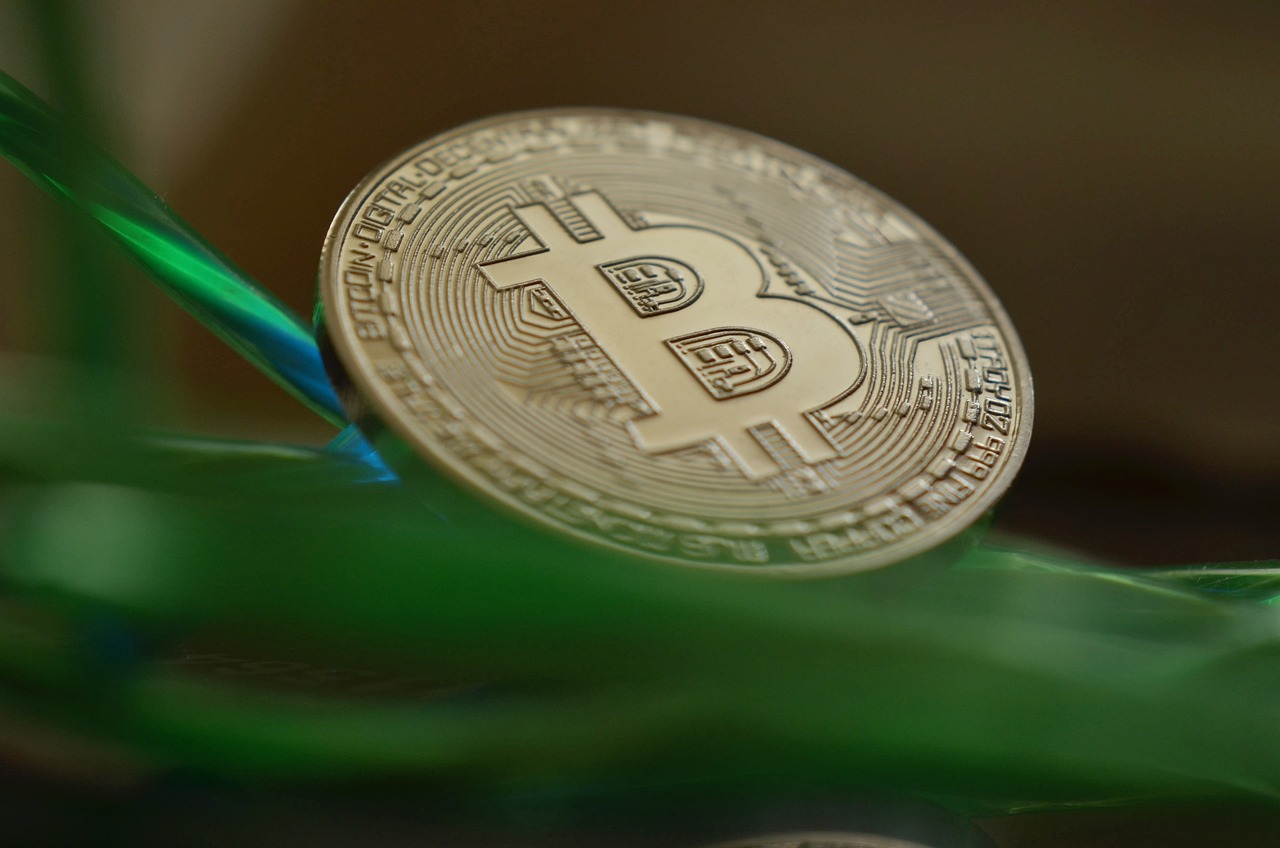
Use Cases of Binance Smart Chain
Binance Smart Chain (BSC) has emerged as a powerhouse in the blockchain ecosystem, providing a versatile platform for a myriad of applications. Its rapid adoption can be attributed to its unique features and the growing demand for decentralized solutions. From decentralized finance (DeFi) to non-fungible tokens (NFTs), the use cases of BSC are as diverse as they are exciting. Let’s dive into some of the most prominent applications that have found a home on this innovative blockchain.
One of the most significant areas where Binance Smart Chain shines is in the realm of Decentralized Finance (DeFi). The DeFi boom has taken the crypto world by storm, and BSC is at the forefront of this revolution. With its high transaction speeds and low fees, it has become a popular choice for developers looking to build lending platforms, decentralized exchanges, and yield farming opportunities. For instance, platforms like PancakeSwap and Venus have attracted millions of users by offering seamless trading experiences and lucrative yield farming options. These platforms allow users to lend, borrow, and trade assets without the need for traditional financial intermediaries, thus promoting financial inclusivity.
In addition to DeFi, the Non-Fungible Token (NFT) market is another booming sector on Binance Smart Chain. NFTs have revolutionized the way we think about ownership and value in the digital world. BSC hosts a growing ecosystem of NFT marketplaces and projects, enabling artists, gamers, and collectors to create, buy, and sell unique digital assets. Popular platforms like BakerySwap and Treasureland have made it easy for users to explore the vibrant world of NFTs, from digital art to virtual real estate. The low transaction fees on BSC make it an attractive option for creators and collectors alike, allowing for greater participation in this exciting market.
The versatility of Binance Smart Chain does not stop there; it also supports a range of other applications, including gaming and social platforms. Blockchain gaming has gained immense popularity, with many projects leveraging BSC’s capabilities to create immersive gaming experiences that reward players with cryptocurrency. Games like CryptoBlades and My DeFi Pet have captivated audiences by integrating play-to-earn mechanics, allowing players to earn real value through their engagement.
Furthermore, BSC is increasingly being used for token launches and initial DEX offerings (IDOs). The ease of launching tokens on BSC has led to a surge in new projects entering the market, providing investors with more opportunities to discover innovative solutions. This has been facilitated by platforms like Binance Launchpad and PancakeSwap’s IFO feature, which streamline the process of fundraising for new projects.
To summarize, the use cases of Binance Smart Chain are vast and varied, reflecting the platform's ability to adapt to the ever-evolving needs of the blockchain community. With its robust infrastructure, low fees, and high transaction speeds, BSC continues to attract developers and users alike, paving the way for a new wave of innovation in the crypto space.
- What is Binance Smart Chain? - Binance Smart Chain is a blockchain platform designed for running decentralized applications (dApps) and smart contracts, known for its high speed and low transaction costs.
- How does Binance Smart Chain differ from Ethereum? - While both are platforms for dApps, BSC offers faster transaction speeds and lower fees, and it is compatible with Ethereum, allowing for easy migration of projects.
- What types of applications can be built on Binance Smart Chain? - Developers can build a wide range of applications, including DeFi platforms, NFT marketplaces, gaming applications, and more.
- Is Binance Smart Chain secure? - Like any blockchain, BSC has its security risks, but it employs various measures to mitigate vulnerabilities, including a robust validator network.
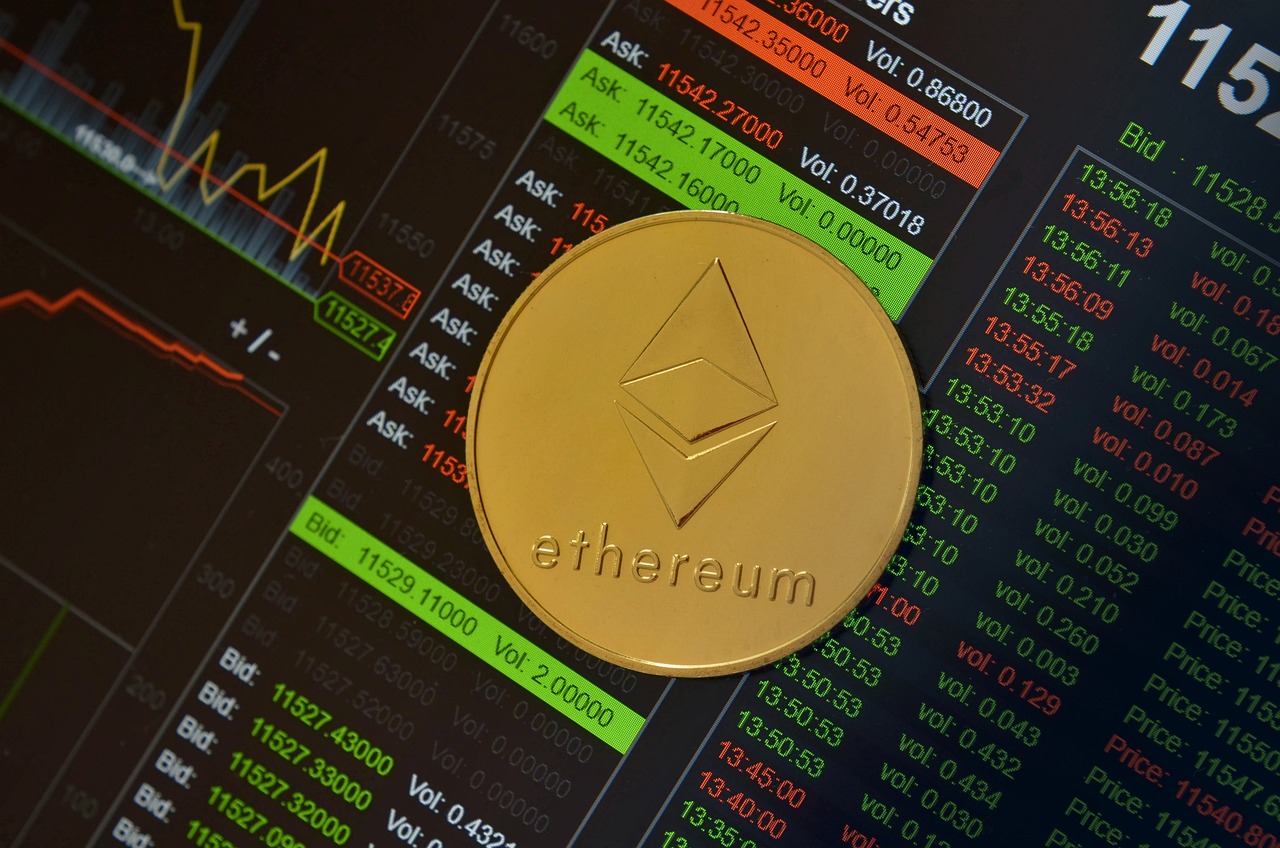
Decentralized Finance (DeFi) Applications
The rise of Decentralized Finance (DeFi) on Binance Smart Chain (BSC) has been nothing short of revolutionary. DeFi refers to a broad category of financial applications in cryptocurrency or blockchain geared toward disrupting financial intermediaries. With BSC's rapid transaction speeds and low fees, it has become a hotbed for innovative DeFi projects, attracting developers and users alike.
One of the most significant advantages of DeFi on BSC is the ability to engage in a wide array of financial services without the need for traditional banks. Imagine being able to lend, borrow, or trade assets without ever stepping foot into a bank or relying on a centralized entity. This is the magic of DeFi! On Binance Smart Chain, users can access platforms that offer lending, borrowing, and trading services, all facilitated through smart contracts.
For instance, platforms like PancakeSwap and Venus have gained immense popularity. PancakeSwap operates as a decentralized exchange (DEX) that allows users to swap tokens directly from their wallets, while Venus offers a money market for lending and borrowing assets. Both platforms leverage BSC's unique features to provide users with an efficient and cost-effective experience. Here’s a quick overview of these platforms:
| Platform | Type | Key Features |
|---|---|---|
| PancakeSwap | Decentralized Exchange | Token swaps, yield farming, lottery |
| Venus | Money Market | Lending, borrowing, stablecoin issuance |
Moreover, the yield farming opportunities on Binance Smart Chain are particularly enticing. Users can stake their tokens in various liquidity pools to earn rewards, often at rates that would make traditional savings accounts blush. This has led to a surge in liquidity provision, which is crucial for the functioning of DeFi applications.
However, it's not just about the big players. The BSC ecosystem is also home to a myriad of smaller projects that cater to niche markets or specific user needs. These projects often bring unique features or innovative solutions to the table, further enriching the DeFi landscape. For example, platforms focusing on insurance, derivatives, or asset management are emerging, showcasing the versatility and potential of DeFi on Binance Smart Chain.
In conclusion, the DeFi applications on Binance Smart Chain are not merely a trend; they represent a fundamental shift in how we think about finance. By eliminating intermediaries and providing users with direct control over their assets, BSC is paving the way for a more inclusive financial system. As more users and developers flock to this platform, the possibilities for innovation are virtually limitless.
- What is DeFi?
DeFi, or Decentralized Finance, refers to financial services offered on blockchain networks without traditional intermediaries. - Why is Binance Smart Chain popular for DeFi?
BSC offers high transaction speeds and low fees, making it an attractive option for developers and users. - What are some popular DeFi applications on BSC?
Notable platforms include PancakeSwap for trading and Venus for lending and borrowing. - How can I participate in DeFi on Binance Smart Chain?
You can participate by connecting a compatible wallet, such as MetaMask, and interacting with DeFi platforms directly.

Non-Fungible Tokens (NFTs) on BSC
In recent years, the world of Non-Fungible Tokens (NFTs) has exploded in popularity, and Binance Smart Chain (BSC) has become a significant player in this space. With its unique capabilities and lower transaction fees compared to other platforms, BSC has attracted a wave of artists, gamers, and collectors eager to dive into the NFT ecosystem. The combination of speed, affordability, and a burgeoning community has made BSC a hotspot for NFT innovation.
One of the standout features of NFTs on BSC is the accessibility it offers to creators and collectors alike. Unlike some other blockchain platforms where gas fees can skyrocket during peak times, BSC maintains relatively low costs. This affordability encourages more artists to mint their work as NFTs, broadening the market and allowing for a diverse range of digital art and collectibles. Imagine being able to purchase a unique piece of digital art without worrying about exorbitant fees—that's the reality on Binance Smart Chain!
There are several notable marketplaces where users can explore and trade NFTs on BSC. These platforms not only showcase a variety of digital assets but also provide tools for creators to launch their projects. Some of the most popular marketplaces include:
- BakerySwap: A decentralized exchange that doubles as an NFT marketplace, allowing users to trade both tokens and unique digital assets.
- Treasureland: A user-friendly platform that focuses on the NFT ecosystem, offering a seamless experience for both buyers and sellers.
- Binance NFT Marketplace: Launched by Binance itself, this marketplace connects users to a wide array of NFTs, from art to gaming assets.
The versatility of NFTs on BSC extends beyond just art. The platform has become a breeding ground for innovative projects that merge gaming and collectibles. For instance, play-to-earn games have surged in popularity, allowing players to earn NFTs as rewards for their in-game achievements. This not only enhances the gaming experience but also provides players with tangible assets that can be traded or sold.
Moreover, the integration of NFTs into various sectors, such as gaming and virtual real estate, has opened up new avenues for monetization and engagement. As the NFT landscape continues to evolve, BSC stands out as a pivotal platform that supports this growth. The community-driven approach fosters a culture of innovation, encouraging developers to experiment with new ideas and applications for NFTs.
In conclusion, the NFT ecosystem on Binance Smart Chain is thriving, thanks to its unique advantages and vibrant community. As more creators and collectors flock to the platform, the potential for growth and innovation seems limitless. Whether you're an artist looking to showcase your work or a collector hunting for the next big digital asset, BSC offers a dynamic environment that caters to all.
Here are some common questions regarding NFTs on Binance Smart Chain:
- What are NFTs? Non-Fungible Tokens are unique digital assets that represent ownership of a specific item or piece of content on the blockchain.
- How do I create an NFT on BSC? You can create an NFT by using one of the many marketplaces available on BSC, where you can mint your digital asset and list it for sale.
- Are NFTs on BSC secure? While no platform is entirely risk-free, BSC employs robust security measures to protect users and their assets.
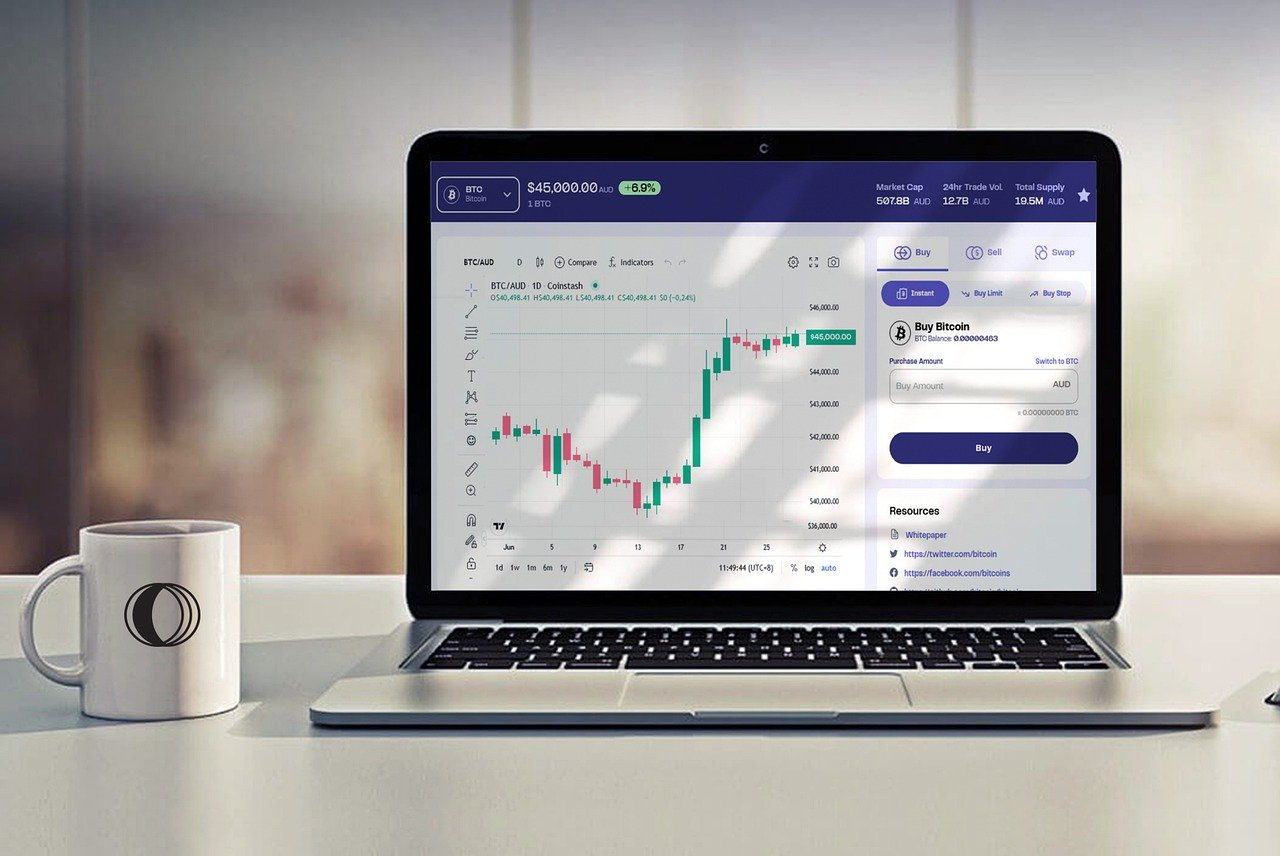
Challenges Facing Binance Smart Chain
Despite its rapid growth and popularity, Binance Smart Chain (BSC) is not without its challenges. As a relatively new player in the blockchain arena, it faces a variety of hurdles that could impact its long-term success. One of the most significant issues revolves around centralization. While BSC was designed to provide speed and efficiency, its validator structure has raised eyebrows among critics. With a limited number of validators, there are concerns that the network may not be as decentralized as it claims, potentially undermining user trust. This centralization can lead to vulnerabilities, as a small group of validators could exert undue influence over the network, making it less resistant to censorship and manipulation.
Another pressing concern is the security risks associated with BSC. As the platform has gained traction, it has also attracted malicious actors looking to exploit its vulnerabilities. Smart contract exploits have become a common threat, with numerous projects experiencing hacks that result in substantial financial losses. These incidents not only damage the reputation of the affected projects but also cast a shadow over BSC as a whole. The rapid pace of innovation in the DeFi space can sometimes outstrip the security measures in place, leading to a precarious environment for users and developers alike.
Moreover, competition is fierce in the blockchain sector. BSC is constantly vying for attention against established giants like Ethereum and emerging platforms that offer similar functionalities. As more developers and users flock to these alternatives, BSC must continuously innovate to maintain its relevance. The challenge lies in not only attracting new projects but also retaining existing ones, which can be a daunting task in an ever-evolving landscape.
To summarize, the challenges facing Binance Smart Chain can be categorized into three main areas:
- Centralization Concerns: Limited validators may lead to reduced trust and security.
- Security Risks: Vulnerabilities in smart contracts can result in hacks and financial losses.
- Intense Competition: Competing with established and emerging blockchain platforms requires continuous innovation.
As BSC navigates these challenges, it is crucial for the development team to implement robust security measures and enhance decentralization to foster user trust. The future of Binance Smart Chain hinges on its ability to address these issues effectively while continuing to provide the speed and efficiency that has made it attractive to users and developers alike.
1. What are the main challenges facing Binance Smart Chain?
Binance Smart Chain faces challenges related to centralization, security vulnerabilities, and intense competition from other blockchain platforms.
2. How does centralization affect Binance Smart Chain?
Centralization can lead to reduced trust among users and may expose the network to risks of censorship and manipulation due to a limited number of validators.
3. What security risks are associated with Binance Smart Chain?
Security risks include smart contract exploits and network attacks, which can result in significant financial losses for users and projects.
4. How does Binance Smart Chain compare to Ethereum?
While both platforms support decentralized applications, Binance Smart Chain offers faster transaction speeds and lower fees, but it faces criticism regarding its level of decentralization.
5. What measures can Binance Smart Chain take to address its challenges?
To overcome these challenges, BSC should focus on enhancing decentralization, implementing robust security protocols, and fostering innovation to stay competitive in the blockchain market.
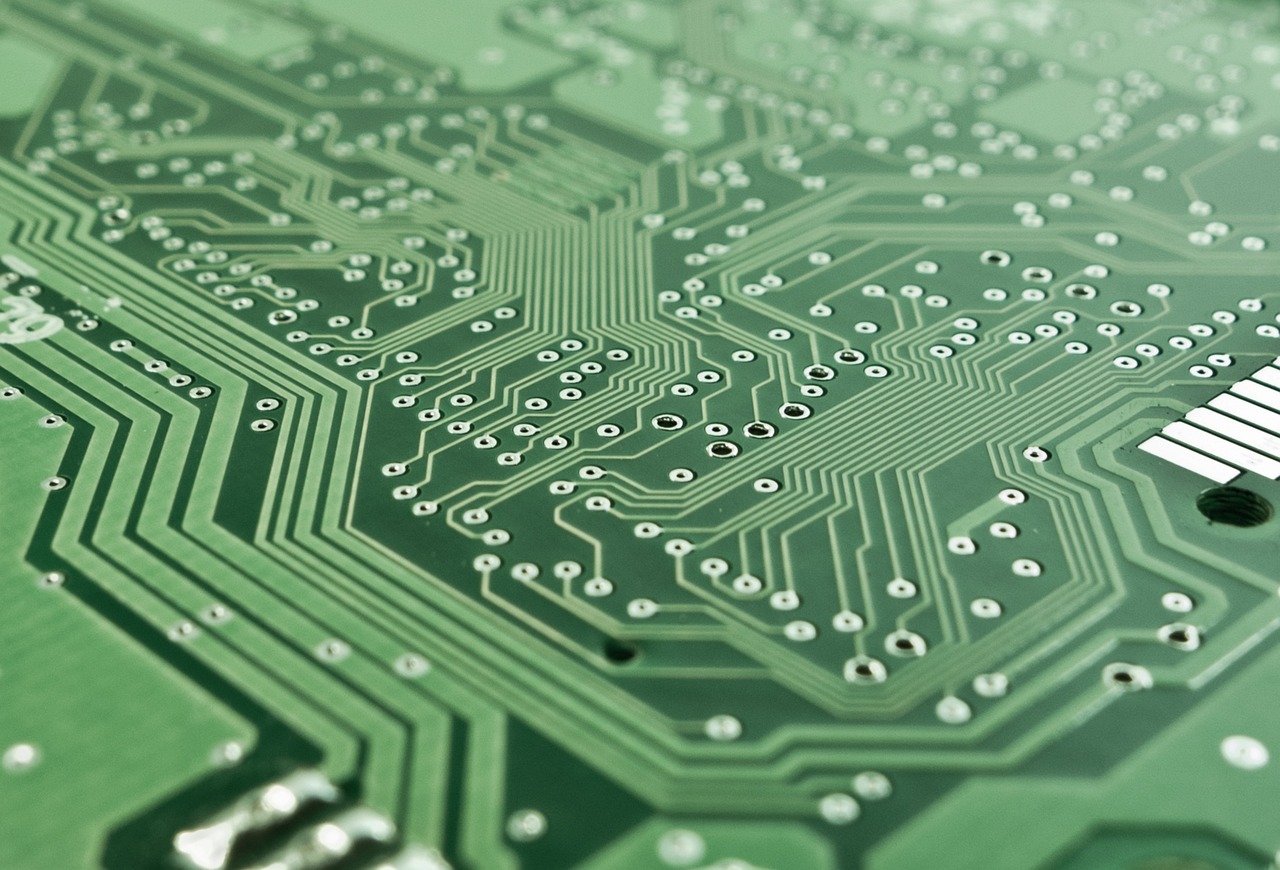
Centralization Concerns
When we talk about Binance Smart Chain (BSC), one of the most pressing issues that often comes up is centralization. While the blockchain world thrives on the principles of decentralization, BSC has faced scrutiny regarding its governance and validator structure. This centralization can raise eyebrows, especially among crypto purists who advocate for a more democratized financial ecosystem.
At its core, BSC operates on a Proof of Staked Authority (PoSA) consensus mechanism, which means that a limited number of validators are responsible for producing blocks and confirming transactions. Currently, there are only 21 validators that hold the power to validate transactions on the network. This is significantly fewer compared to Ethereum, which has thousands of nodes working to secure the network. The limited number of validators can lead to concerns about network security and the potential for collusion, where a small group could manipulate transactions to their advantage.
Moreover, the governance model of Binance Smart Chain is another area that raises red flags. Unlike many other decentralized platforms where token holders have a direct say in governance decisions, BSC's governance is primarily controlled by Binance. This centralization of power can lead to a lack of transparency and trust among users. If decisions are made without community input, it can create a disconnect between the platform's developers and its users, leading to skepticism about the platform's long-term viability.
It's also worth noting that centralization can impact the user experience. While BSC boasts faster transaction speeds and lower fees, these advantages come at a cost. Users may find themselves relying on a centralized entity for critical decisions and updates, which can undermine the very ethos of what blockchain technology aims to achieve. For instance, if Binance decides to implement a significant change, users might have limited recourse to voice their concerns or influence the outcome.
In a nutshell, while Binance Smart Chain offers numerous benefits, its centralization concerns cannot be overlooked. The balance between efficiency and decentralization is delicate, and BSC must navigate these waters carefully to maintain user trust and ensure long-term growth. As the blockchain ecosystem continues to evolve, it will be interesting to see how Binance addresses these concerns and whether it can adapt to the demands of a more decentralized future.
- What is Binance Smart Chain? - Binance Smart Chain is a blockchain network that runs in parallel to Binance Chain, enabling smart contract functionality and compatibility with Ethereum.
- Why are centralization concerns important? - Centralization can lead to security vulnerabilities and a lack of trust among users, which can impact the overall integrity of the blockchain.
- How many validators are on Binance Smart Chain? - Binance Smart Chain currently operates with 21 validators.
- What consensus mechanism does Binance Smart Chain use? - BSC uses a Proof of Staked Authority (PoSA) consensus mechanism.
- Can users influence governance decisions on BSC? - Governance on BSC is primarily controlled by Binance, limiting direct user influence.

Security Risks and Vulnerabilities
When it comes to the world of blockchain, security is paramount. Binance Smart Chain (BSC) is no exception to this rule, facing a myriad of that could potentially jeopardize user assets and trust. One of the primary concerns revolves around smart contract exploits. These are vulnerabilities within the code that can be manipulated by malicious actors, leading to significant financial losses. For instance, there have been several high-profile hacks in the DeFi space that have exploited flaws in smart contracts, resulting in millions of dollars being drained from projects built on BSC.
Additionally, the network itself is susceptible to network attacks. These attacks can range from Distributed Denial of Service (DDoS) attacks, which aim to overwhelm the network, to more sophisticated methods that could compromise the integrity of transactions. The decentralized nature of BSC, while providing numerous advantages, can also make it a target for such malicious activities. The challenge lies in balancing decentralization and security, as a more centralized approach could mitigate some risks but may also lead to accusations of centralization.
Another critical aspect to consider is the validator structure. BSC operates with a limited number of validators, which can lead to centralization concerns. If a small group of validators controls the majority of the network, it could pose risks related to collusion and manipulation. This is particularly concerning for users who value transparency and trust in their blockchain transactions. The governance model of BSC also raises eyebrows, as it may not be as decentralized as some users would prefer, leading to potential weaknesses in decision-making processes.
To combat these vulnerabilities, the Binance team has implemented various measures, including regular audits of smart contracts and a bug bounty program to encourage ethical hackers to report vulnerabilities before they can be exploited. However, the rapidly evolving nature of the blockchain space means that new threats are constantly emerging. Therefore, it is crucial for users to stay informed and practice due diligence when interacting with dApps on the BSC.
In summary, while Binance Smart Chain offers exciting opportunities for developers and users alike, it is essential to remain vigilant about the security risks associated with the platform. Understanding these vulnerabilities can help users make informed decisions and protect their investments in the ever-changing landscape of blockchain technology.
- What are the main security risks associated with Binance Smart Chain?
The primary risks include smart contract exploits, network attacks, and concerns over validator centralization. - How can users protect themselves from security vulnerabilities on BSC?
Users should conduct thorough research on dApps, utilize reputable platforms, and stay updated on security practices. - What measures does Binance take to enhance security on the Smart Chain?
Binance conducts regular audits, offers a bug bounty program, and continuously monitors the network for vulnerabilities.

The Future of Binance Smart Chain
The future of Binance Smart Chain (BSC) looks incredibly promising, and there are several factors that contribute to this optimism. As the blockchain landscape continues to evolve, BSC has positioned itself as a formidable player, thanks in large part to its innovative features and robust ecosystem. With ongoing developments, partnerships, and enhancements, the potential for growth is substantial. But what does the future hold for this dynamic platform? Let's dive in!
One of the key elements that will shape the future of BSC is the introduction of upcoming features and upgrades. Developers are constantly working on improvements that aim to enhance scalability, security, and interoperability. These upgrades are crucial as they not only address existing challenges but also prepare BSC to handle the increasing demand from users and developers alike. For instance, advancements in layer 2 solutions and cross-chain compatibility are on the horizon, which could significantly boost transaction speeds and reduce costs even further.
Moreover, BSC's ability to attract new projects and partnerships is another factor that will influence its trajectory. The platform has already seen a surge in decentralized finance (DeFi) applications and non-fungible tokens (NFTs), but there's still room for expansion. As more developers recognize the advantages of building on BSC, we can expect a diverse range of projects to emerge, further enriching the ecosystem. This growing community will not only enhance innovation but also foster a sense of collaboration among developers, leading to more sophisticated applications and services.
In addition, the impact of Binance Smart Chain on the broader blockchain ecosystem cannot be understated. As BSC continues to gain traction, its success may inspire other blockchain networks to adopt similar strategies, particularly in terms of scalability and user experience. This ripple effect could lead to an overall improvement in blockchain technology, making it more accessible and efficient for users worldwide. The enthusiasm surrounding BSC is contagious, and its influence may very well shape the future of decentralized applications and services.
However, it's essential to remain mindful of the challenges that BSC faces. Issues such as centralization concerns and potential security vulnerabilities could pose risks to its long-term growth. To mitigate these threats, ongoing efforts to promote decentralization and enhance security protocols will be critical. The community's involvement in governance and decision-making processes will also play a vital role in ensuring that BSC remains resilient and trustworthy.
As we look ahead, the future of Binance Smart Chain appears bright, filled with opportunities for innovation and growth. With its unique features, a strong ecosystem, and a commitment to ongoing improvement, BSC is well-positioned to continue its ascent in the blockchain space. The excitement surrounding its potential is palpable, and as more users and developers flock to the platform, we can expect to see a wave of creativity and advancement that will undoubtedly push the boundaries of what blockchain technology can achieve.
- What is Binance Smart Chain? - Binance Smart Chain is a blockchain network that runs in parallel with Binance Chain, enabling smart contracts and decentralized applications.
- How does BSC differ from Ethereum? - BSC offers faster transaction speeds and lower fees compared to Ethereum, while maintaining compatibility with Ethereum's ecosystem.
- What are the main use cases for BSC? - BSC is primarily used for decentralized finance (DeFi) applications, non-fungible tokens (NFTs), and various decentralized applications (dApps).
- What challenges does BSC face? - Centralization concerns, security vulnerabilities, and competition from other blockchain networks are some of the challenges facing BSC.

Upcoming Features and Upgrades
As the digital landscape continues to evolve, Binance Smart Chain (BSC) is not resting on its laurels. The team behind BSC is constantly innovating and enhancing its platform to meet the growing demands of users and developers alike. One of the most exciting upcoming features is the planned implementation of scalability improvements. This upgrade aims to increase the network's transaction throughput, allowing it to handle a larger volume of transactions without compromising speed or efficiency. Imagine a bustling highway that expands to accommodate more vehicles during rush hour—this is what BSC is striving for in the blockchain realm.
Moreover, BSC is also focusing on enhancing interoperability with other blockchain networks. The goal is to create a more connected ecosystem where assets and data can flow seamlessly between different platforms. This will not only enhance user experience but also foster innovation as developers can leverage multiple blockchains to create more robust decentralized applications (dApps). Think of it as a bridge connecting islands in an archipelago, allowing for easier travel and trade between them.
Another notable upgrade on the horizon is the introduction of improved governance mechanisms. The BSC team recognizes the importance of community input and aims to decentralize decision-making processes further. By implementing a more democratic governance model, users will have a greater say in the platform's future developments and upgrades. This is akin to a town hall meeting where every voice counts, ensuring that the community's needs and desires are addressed.
Additionally, there are discussions about enhancing the security protocols within the network. As the popularity of BSC grows, so does its attractiveness to malicious actors. To combat this, the team is working on integrating advanced security measures to protect users and their assets. This includes regular audits of smart contracts and the implementation of more rigorous validation processes to ensure that only trustworthy projects are allowed on the platform.
To summarize, the upcoming features and upgrades for Binance Smart Chain promise to enhance its functionality, security, and user experience significantly. With scalability improvements, better interoperability, democratic governance, and robust security measures, BSC is poised to solidify its position as a leading player in the blockchain ecosystem. As we look forward to these developments, it's clear that the future of Binance Smart Chain is bright and full of potential.
- What is Binance Smart Chain?
Binance Smart Chain is a blockchain network designed for running smart contracts and decentralized applications (dApps), offering high performance and low transaction fees. - How does Binance Smart Chain differ from Ethereum?
BSC offers faster transaction speeds and lower fees compared to Ethereum, while also being compatible with Ethereum's ecosystem, allowing easy migration of projects. - What are the main use cases for Binance Smart Chain?
BSC is widely used for decentralized finance (DeFi) applications, non-fungible tokens (NFTs), and various other dApps that require efficient blockchain solutions. - What challenges does Binance Smart Chain face?
Challenges include concerns over centralization, security risks, and competition from other blockchain networks that could impact its growth. - What is the future outlook for Binance Smart Chain?
The future looks promising with ongoing upgrades, partnerships, and a growing user base, positioning BSC as a key player in the blockchain industry.

Impact on the Blockchain Ecosystem
The rise of Binance Smart Chain (BSC) has undeniably reshaped the blockchain ecosystem, introducing a wave of innovation and opportunities across various sectors. With its unique features and growing popularity, BSC has not only attracted developers but has also significantly influenced the way users interact with blockchain technology.
One of the most profound impacts of Binance Smart Chain is its contribution to the Decentralized Finance (DeFi) landscape. By providing a platform that allows for faster transactions and lower fees, BSC has opened the floodgates for a myriad of DeFi projects. This has led to a surge in decentralized exchanges, lending platforms, and yield farming opportunities that were previously dominated by Ethereum. The ability to perform transactions at lightning speed and with minimal costs has made BSC a go-to choice for many developers and users alike, fostering a more inclusive financial ecosystem.
Moreover, the interoperability with Ethereum has created a seamless bridge for developers looking to migrate their projects. This has not only expanded the range of decentralized applications (dApps) available on BSC but has also encouraged a spirit of collaboration within the blockchain community. Developers can now leverage the strengths of both platforms, leading to a rich diversity of applications that cater to various user needs.
In addition to DeFi, the rise of Non-Fungible Tokens (NFTs) on Binance Smart Chain has further cemented its role in the blockchain ecosystem. The ability to create, buy, and sell NFTs on a platform that offers lower transaction fees has attracted artists, gamers, and collectors alike. Popular marketplaces and unique projects are emerging, showcasing digital art, collectibles, and gaming assets, thus expanding the scope of what NFTs can achieve.
However, the impact of Binance Smart Chain extends beyond just financial applications and NFTs. The platform's success has sparked interest from traditional industries, encouraging them to explore blockchain technology for various use cases. From supply chain management to digital identity verification, businesses are beginning to recognize the potential of blockchain solutions, influenced in part by the advancements made by BSC.
As BSC continues to grow, its influence on the blockchain ecosystem is likely to deepen. The ongoing innovations, partnerships, and improvements in scalability and interoperability will not only enhance its own capabilities but also inspire other blockchain networks to adapt and evolve. In this rapidly changing landscape, Binance Smart Chain stands as a testament to the potential of blockchain technology to revolutionize industries and create new opportunities.
- What is Binance Smart Chain?
BSC is a blockchain network that runs in parallel with Binance Chain, designed to facilitate smart contracts and decentralized applications. - How does Binance Smart Chain differ from Ethereum?
While both platforms support smart contracts, BSC offers faster transaction speeds and lower fees, making it more appealing for developers and users. - Can I migrate my Ethereum-based project to Binance Smart Chain?
Yes, BSC is compatible with Ethereum, allowing developers to easily migrate their projects and benefit from its features. - What are the main use cases of Binance Smart Chain?
BSC is primarily used for DeFi applications, NFTs, and various decentralized applications across different industries. - Are there security risks associated with Binance Smart Chain?
Like any blockchain, BSC faces security risks, including smart contract vulnerabilities; however, measures are continuously taken to enhance its security.
Frequently Asked Questions
- What is Binance Smart Chain (BSC)?
Binance Smart Chain is a blockchain platform developed by Binance that runs parallel to Binance Chain. It is designed to facilitate smart contracts and decentralized applications (dApps), offering high transaction speeds and low fees, making it a popular choice among developers and users alike.
- How does Binance Smart Chain differ from Ethereum?
While both Binance Smart Chain and Ethereum support smart contracts, BSC is known for its dual-chain architecture, which enhances scalability and interoperability. This allows developers to easily migrate their projects from Ethereum to BSC, benefiting from faster transactions and lower costs.
- What are the main benefits of using Binance Smart Chain?
Binance Smart Chain offers several advantages, such as:
- High transaction speeds
- Low transaction fees
- Interoperability with Ethereum
- A robust ecosystem for decentralized finance (DeFi) and non-fungible tokens (NFTs)
- What types of applications can be built on Binance Smart Chain?
Developers can create a variety of applications on Binance Smart Chain, including:
- Decentralized finance (DeFi) platforms
- Non-fungible token (NFT) marketplaces
- Gaming applications
- Decentralized exchanges (DEXs)
- Are there any security risks associated with Binance Smart Chain?
Like any blockchain platform, Binance Smart Chain faces security risks, including potential smart contract exploits and network attacks. However, the BSC team actively works to identify vulnerabilities and implement security measures to protect users and their assets.
- What are the centralization concerns regarding Binance Smart Chain?
Critics point out that Binance Smart Chain's validator structure may lead to centralization, which can affect user trust and network security. While BSC aims to maintain decentralization, the governance model and validator selection process are areas of ongoing discussion.
- What is the future of Binance Smart Chain?
The future of Binance Smart Chain looks promising, with ongoing innovations and partnerships. Upcoming features and upgrades are expected to enhance its scalability and interoperability, solidifying its position in the competitive blockchain market.

